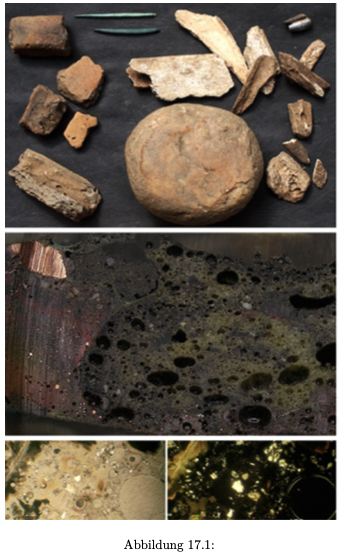The Chiemgau Impact – a meteorite impact in the Bronze-/Iron Age and its extraordinary appearance in the archaeological record
Barbara Rappenglück (Gilching), Michael Hiltl (Oberkochen), Michael Rappenglück (Gilching), Kord Ernstson (Würzburg)

Abstract. – The largest meteorite impact of the Holocene known to date occurred during the Bronze/Iron Age in southeastern Bavaria, between Altötting and the edge of the Alps. The event is known as the “Chiemgau Impact”. More than 100 craters with diameters from 5m up to several hundred meters are distributed over an area of about 60km length and 30km width. Finds of meteoric material confirm the event as well as the widespread evidence of so-called shock metamorphosis in the rock. The article focuses on new investigations of “slags” from an archaeological excavation in Chieming-Stöttham, on the eastern shore of Lake Chieming. Six objects analysed with polarisation microscope and SEM-EDS turned out to be complex combinations of rock and metal particles. While the rock components show the shock metamorphosis typical for a meteorite impact, the metallic components proved to be remnants of artefacts made of bronze or iron with a high lead content. Together they form an impact rock. To our knowledge, these are the first examples worldwide in which artefacts have become components of an impact rock. In addition, the special nature of the metallic components and the consideration of the archaeological context allow the more precise dating of the Chiemgau Impact to approximately 900–600 BC.



































